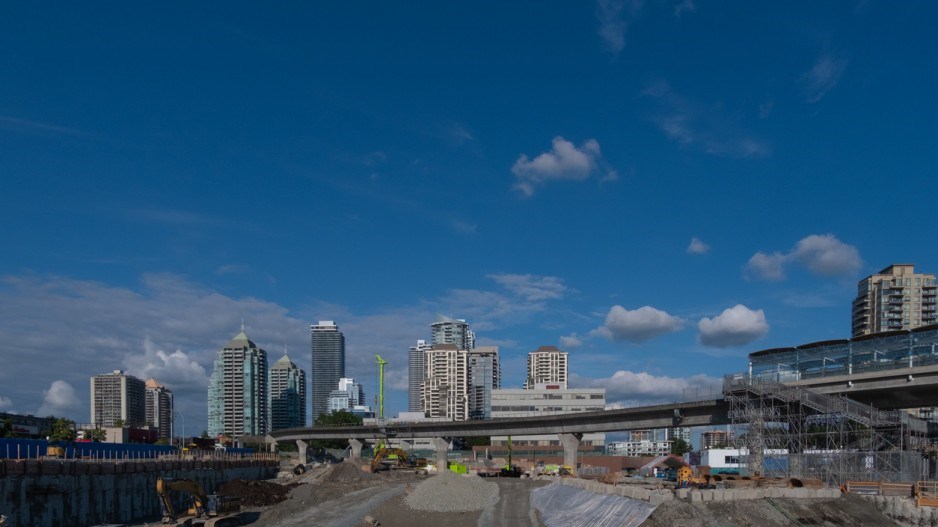Purchasing new land or property? Do you know what lurks in the subsurface?
Unexpected environmental issues can disrupt a property purchase and hinder potential development.
“Contamination doesn’t discriminate. Potential environmental issues can occur anywhere, whether it’s agricultural or industrial land,” says Gavin Leung, Operations Manager at Next Environmental Inc.
“Residential properties can also have their own environmental challenges. There can be larger issues that require extensive work, but also small problems that can be easily resolved.”
What kind of environmental risks should property buyers be aware of? Leung offers this guidance.
1. Financing a contaminated property purchase
“There’s a common misconception that a bank or private lender would be really hesitant to loan money to anyone in B.C. or across Canada to purchase a contaminated site. Mainly because it sounds scary,” Leung says.
“That’s not the case. Lenders typically just want to understand the environmental and financial liabilities of a property prior to a loan.”
One of the reasons the environmental consulting industry does work is to ensure that buyers can purchase and remediate a piece of contaminated property.
In fact, a contaminated property can present a deal for potential buyers who often buy the land at a discounted price. Similar to a house flip, buyers can clean up the land and develop or resell it for an increased price.
“We work with numerous approved lenders and they have different levels of risk tolerance. They usually provide a loan for contaminated site purchase,” Leung says.
2. False positives
Say you have an environmental report for a property you’re interested in purchasing, and it states there is contamination. There can be scenarios where this contamination is a false positive. In other words, it doesn’t mean there is an environmental issue and further investigation is required.
A false positive is not necessarily indicative of contamination. It’s always worth getting a second opinion on the contamination status of a piece of property.
You should always investigate potential contamination a little more prior to making a decision,” Leung says.
“A potential false positive can be rectified by doing a little work, instead of assuming you now need to jump into costly remediation.”
3. Outdated environmental reports
“If you’re planning to purchase a property, it’s always good to get a professional review of reports,” Leung says.
A report may exist, but it may have become obsolete due to numerous amendments and changes to the applicable regulations. Or it might be written in a convoluted way that is hard to understand.
“You wouldn’t tell a doctor that you were given a clean bill of health 10 years ago, so you must be fine now. Similarly, as the body changes with time so do regulation changes and amendments in the environmental industry . You want to get professional advice no matter what,” Leung says.
Make sure you’re asking an environmental expert to review any existing reports.
4. Municipal permits can be difficult to navigate
If you’re purchasing a property, you may have an eye on development or major renovations. Before a buyer can put anything into motion, they must apply for a permit with the local government.
In B.C., most local governments require a municipal permit application to be submitted along with a Site Disclosure Statement (SDS). The SDS summarizes historical and current environmental issues with the site.
“Often people try to do an SDS themselves, or have their non-environmental subconsultant do it. You could easily accidentally cause a lot of problems for yourself by saying or listing the wrong thing,” Leung says.
“It’s not worth saving the money if you don’t know what you’re doing.”
If wrong information is accidentally submitted in the SDS, it can trigger holds and delay your permitting process, which could be potentially catastrophic for a development project timeline.
It’s always best to get help from a professional who understands the process.
5. Losing sight of business objectives
Your business objectives drive regulatory and technical direction, not the other way around.
Often, purchasers and landowners will ask what kind of building they can construct on the property, or what configuration are they limited to.
“Buyers should rather approach land purchases with an idea of what they want to achieve first, and then ask how can we make it happen,” Leung says.
“Your land usage or development plans should inform environmental consultants on how to approach your development decisions.”
Professionals can help you navigate the regulatory environment to make your business goals happen.
For environmental guidance on your next property purchase, visit nextenvironmental.com.
With over 25 years of industry experience, Next Environmental Inc. offers business-forward environmental services, focusing on bridging the gap between business and science through its unique business model consisting of fixed pricing and industry leading turnaround times.




